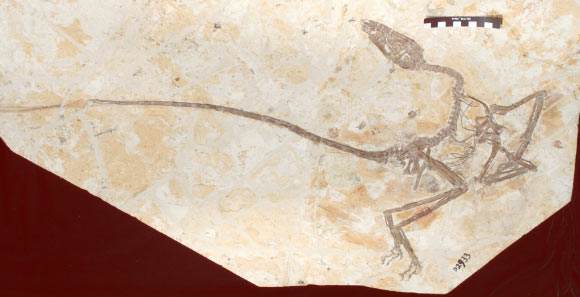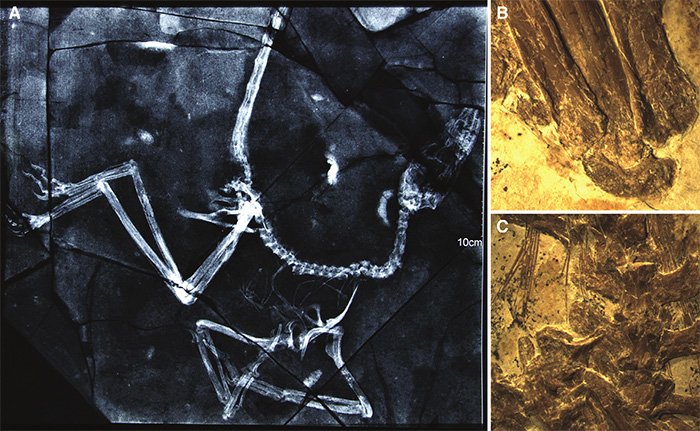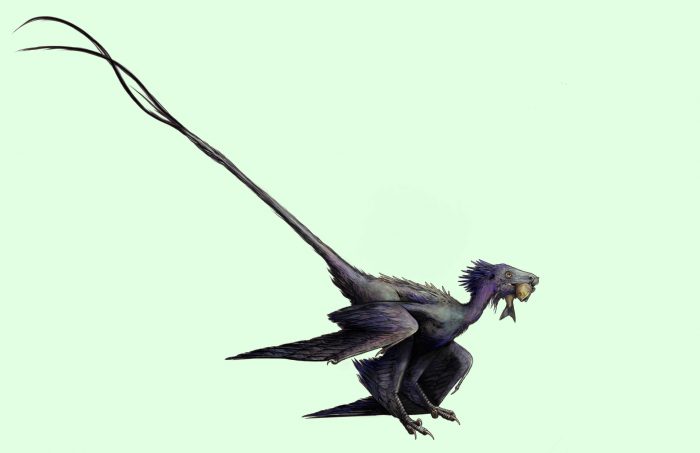Though all sorts of dino-questions remain about everyone's favourite prehistoric creatures, one fact seems beyond debate:
Many dinosaur species had feathers.
But as for the exact hows, whys, and whats of ancient reptile plumage, well... there's still so much to learn. Thankfully, fossils like this one of Wulong bohaiensis are here to help!
Discovered about a decade ago by a farmer in China, paleontologists have spent years carefully studying the 75-million-year-old fossil. The conclusion they've reached says interesting things about the differences between feathered dinosaurs and today's birds.
Essentially? Those dino-kids knew how to get all dressed up!
Prehistoric preteen plumage

The Wulong fossil was carefully studied for ten years. (Ashley Poust)
Okay, okay... what in the world are we talking about? Were there prehistoric music festivals that young dinosaurs were attending on the weekends that they got dressed up for?
(Ha! Noooo! Of course, n— Well, actually we don't really know, do we? Maybe there were? Anyway... NOT important!)
Basically, the fossil in question is of a juvenile dinosaur, and was somewhere between the size of a crow and a raven.
But despite being young, this particular species had some extremely extravagant feathers. These included dramatic, long twin tail feathers that extended far off its tail in an eye-catching fashion.
Earning your feathers

X-rays were used to help determine how grown this dinosaur was when it died. (Ashley Poust)
We know that there are many bird species with exaggerated feathers. Birds of paradise. Lyrebirds. Peacocks.
But with modern birds, feathers come much later in life, when they are ready to mate.
Even though it was young, this feathered dinosaur was already pretty decked out with plumage!
As lead researcher Dr. Ashley Poust of the San Diego Natural History Museum said in a press release: "The specimen has feathers on its limbs and tail that we associate with adult birds, but it had other features that made us think it was a juvenile."
In other words: The feathers say grownup, but bones tests prove it was still a kid. According to Poust, this means that "either the young dinosaurs needed these tail feathers for some function we don't know about, or they were growing their feathers really differently from most living birds."
Either way, the Wulong (whose name means "dancing dragon" in Chinese) is one fossil that is worth a look!
 The Wulong bohaiensis was a small cousin of the more well-known Velociraptor. (Erick Toussaint)
The Wulong bohaiensis was a small cousin of the more well-known Velociraptor. (Erick Toussaint)










I think this dinosaur was named in China, because it looks like it has a Chinese name.
I don’t think so, but maybe